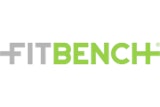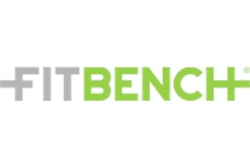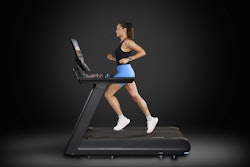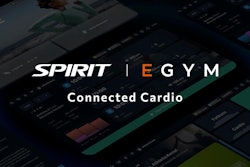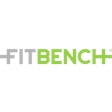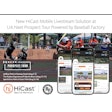Source: National Athletic Trainers' Association (NATA)
Guidelines Published Online Today in Journal of Athletic Training
INDIANAPOLIS, March 7, 2017 – At the eighth Youth Sports Safety Summit this morning, leading health care experts released new recommendations, “The Inter-Association Task Force Document on Emergency Health and Safety: Best Practice Recommendations for Youth Sports Leagues,” published online first today in the Journal of Athletic Training, the scientific publication of the National Athletic Trainers’ Association (NATA). These groundbreaking health and safety guidelines provide a roadmap for national governing bodies (NGBs) to ensure the best policies and procedures are in place to protect young athletes.The task force was originally convened in 2015, and has met annually since then through the leadership and collaboration of NATA and the Korey Stringer Institute. Today’s event was hosted by NATA and the Youth Sports Safety Alliance, comprising nearly 290 sport and health organizations committed to sports safety.
According to the Sport and Fitness Industry Association, 30,893,455 children ages 6-14 participated at least once in one or more of 120 reported activities or sports during 2015. Many of these children participate in sports programs that are governed by NGBs. While these organizations strive to promote fair play and increase physical activity, they function independently to implement best practice health and safety sport policies.
“The document is the first of its kind to address youth sports and specifically the most common conditions resulting in sudden death. Furthermore, it outlines best practices and serves as a call to action for health and safety committees of youth sports national governing bodies,” says Robert Huggins, PhD, LAT, ATC, task force co-chair and vice president of Research and Athlete Performance and Safety at the Korey Stringer Institute. “We hope these recommendations lead to enhanced health and safety support systems for youth sports commissioners and league leaders and improved safety for our youngest athletes.”
The Task Force recommends NGBs implement the following:
- Emergency action plans (EAPs) should be put in place by all member organizations; provide templates and assistance in the development of EAPs.
- Provide an educational plan to train member organization leaders, who in turn inform member coaches about how to organize and conduct EAP training.
- If one is not already in place, develop a strategic plan to direct its member organizations toward resources for appropriate emergency equipment and medical services.
- Develop a training structure to provide education related to emergency health and safety best practices for all members, including but not limited to member leaders, member coaches and parents or guardians of member athletes.
- Make available for all members training modules or educational content on best practices related to emergency action plans; sudden cardiac arrest; exertional heat stroke; catastrophic brain and neck injury; pre-existing medical conditions; environmental conditions and medical services.
- Develop an educational training and certification reporting system for member organizations and member coaches related to all content in item 4.
Create a reporting structure or system to monitor noncompliance as each member organization moves towards the health and safety best practice policies recommended in the document.
The document includes comprehensive information on policy and procedure implementation recommendations. Highlights include:
Emergency Action Plans:
- Establish venue specific EAPs and review annually or as needed.
- Provide access to emergency equipment at each athletic venue as soon as possible following an emergency.
- Recommend training for member leaders and member coaches in first aid, CPR and use of AEDs. Training of officials, parents and athletes is also encouraged. Coaches should also be educated on emergency situations and factors that increase risk of catastrophic injury or sudden death.
Sudden Cardiac Arrest:
- Have in place a comprehensive cardiac emergency policy in accordance with NGB recommendations. Educate on a biannual basis at minimum, member leaders and coaches about proper steps for sudden cardiac arrest management.
- Recommend that athletes undergo cardiovascular screening before participating in sports.
- Recommend moving toward having an AED on-site and readily available within an appropriate amount of time for all organized events, or develop a strategic plan to reduce the time to AED application.
Catastrophic Brain and Neck Injuries:
- Have a comprehensive medical management plan and policy for athletes with a potentially serious head or neck injury, including concussion. Recommend the proper use, fitting and wear of protective equipment.
- Educate member coaches, athletes, parents and other pertinent members regarding the plan and policy on a regular basis. Never permit coaches to return an athlete to play who is suspected of having a serious head or neck injury, or a concussion.
- Advise that the management of any athletes with head or neck injuries, including those who do not require emergency medical treatment, be directed by appropriate medical personnel, including athletic trainers.
Exertional Heat Stroke:
- Have a:
- Heat acclimatization program and “how-to” guide in place before training for the sport when applicable (i.e. preseason in hot environments, non-climate controlled conditions or new environments in unfamiliar regions);
- Medical management plan for the care of athletes with heat stroke;
- Return-to-play plan for athletes who have experienced exertional heat stroke; and
- Plan for assessing environmental conditions to prevent heat-related illnesses including heat stroke
Provide education for member leaders, coaches, athletes, parents and staff on a periodic basis.
Potentially Life Threatening Medical Conditions:
- Consider the importance of educating league leaders, coaches and parents about disclosing potentially threatening medical conditions (e.g. asthma, anaphylaxis, sickle cell trait, diabetes, epilepsy).
- Encourage parents or guardians to disclose member athletes’ potentially life-threatening medical conditions.
- Parents or guardians of member athletes with potentially life-threatening conditions should provide their child with appropriate self-administering medication (e.g. inhaler, epinephrine injector) as indicated by the child’s physician.
Lightning:
- Create and enforce a comprehensive lightning safety policy.
- Enforce the “when thunder roars go indoors” slogan supported by the National Weather Service: when an individual hears thunder, practice or competition should cease immediately and secure shelter should be found.
- Identify the nearest appropriate and safe shelters in the EAP.
Medical Services:
- Establish a plan to provide access to appropriate medical providers such as athletic trainers or other emergency providers for NGB-sponsored or sanctioned events and events at which NGB staff are present.
- Implement a plan to access appropriate and qualified medical providers, such as athletic trainers or other emergency providers, for activities including practices and competitions.
The task force recognizes each organization is unique and will need to address policy and procedure recommendations differently to ensure best practice implementation; and, that all best practice policy and procedure recommendations may not be necessary for each sport (e.g. lightning policy for indoor sports). Many of the deaths in youth sports are preventable and it is the goal of the task force to support youth sport NGBs in this mission of prevention.
“Given the large youth sport participation rates, we must continue to improve sport safety polices and strive towards better practices. Catastrophic injury is an obvious threat to this population,” adds Huggins. “With increased awareness of the potential causes of death and implementation of potential preventive mechanisms, member organizations can improve the health and safety of our young athletes.”
About the National Athletic Trainers’ Association (NATA) – Health Care for Life & Sport:
Athletic trainers are health care professionals who specialize in the prevention, diagnosis, treatment and rehabilitation of injuries and sport-related illnesses. They prevent and treat chronic musculoskeletal injuries from sports, physical and occupational activity, and provide immediate care for acute injuries. Athletic trainers offer a continuum of care that is unparalleled in health care. The National Athletic Trainers' Association represents and supports 44,000 members of the athletic training profession. Visit www.nata.org. At Your Own Risk is NATA’s public awareness campaign designed to educate, provide resources and equip the public to act and advocate for safety in work, life and sport. In an effort to provide comprehensive information, the association has launched a website that provides recommendations on keeping student athletes and communities active and employees safe on the job. Visit AtYourOwnRisk.org.
About the Youth Sports Safety Alliance:
Since 2010, the Youth Sports Safety Alliance has worked to raise awareness, advance legislation and improve medical care for young athletes across the country. High school athletes suffer 2 million injuries; 200,000 doctor visits and 30,000 hospitalizations every year. The alliance is committed to reducing those numbers and improving the health and safety of young athletes. The YSSA was founded by the National Athletic Trainers’ Association and now includes nearly 290 member organizations. Visit: www.youthsportssafetyalliance.org













